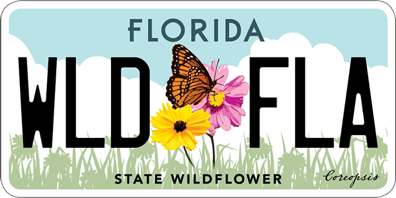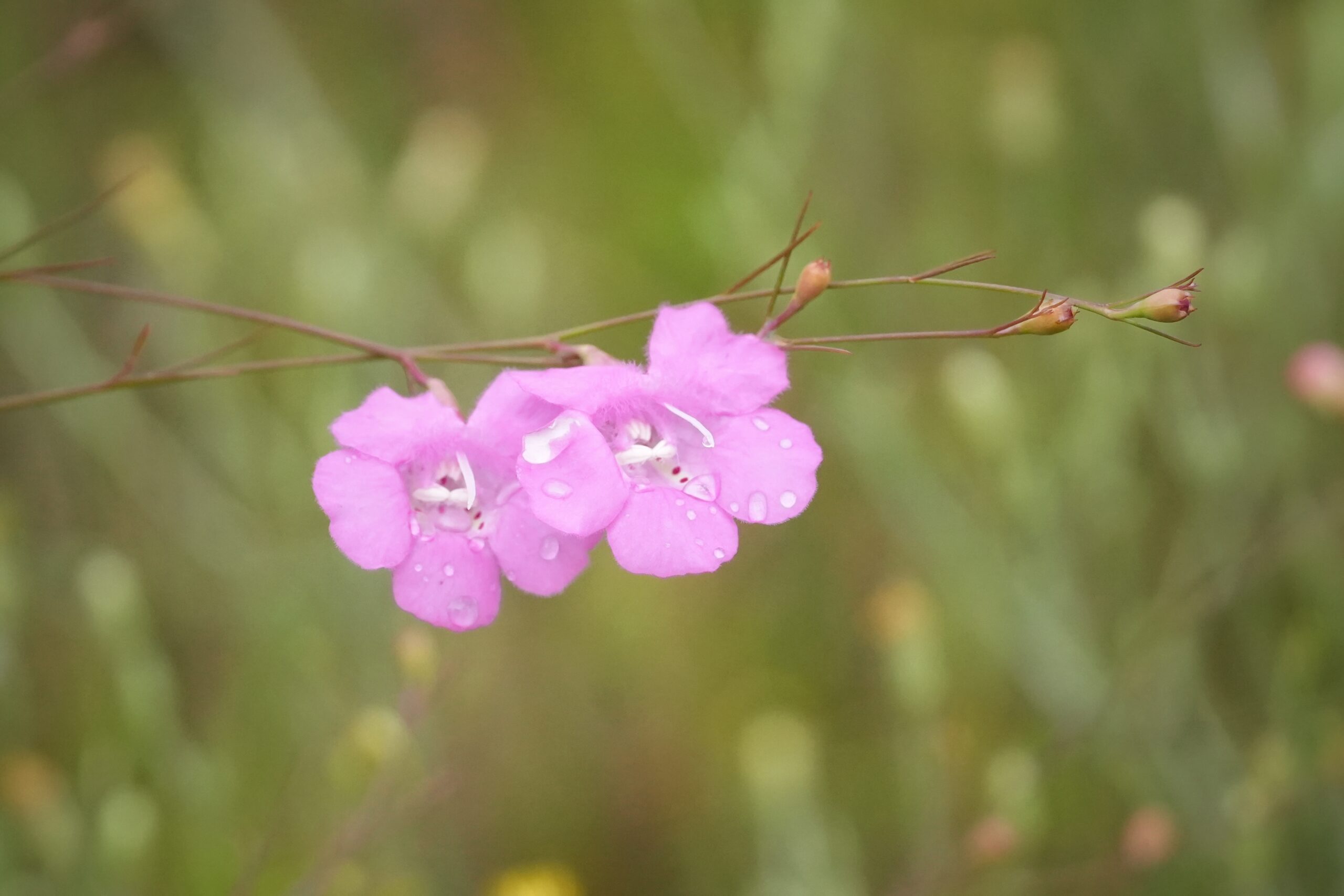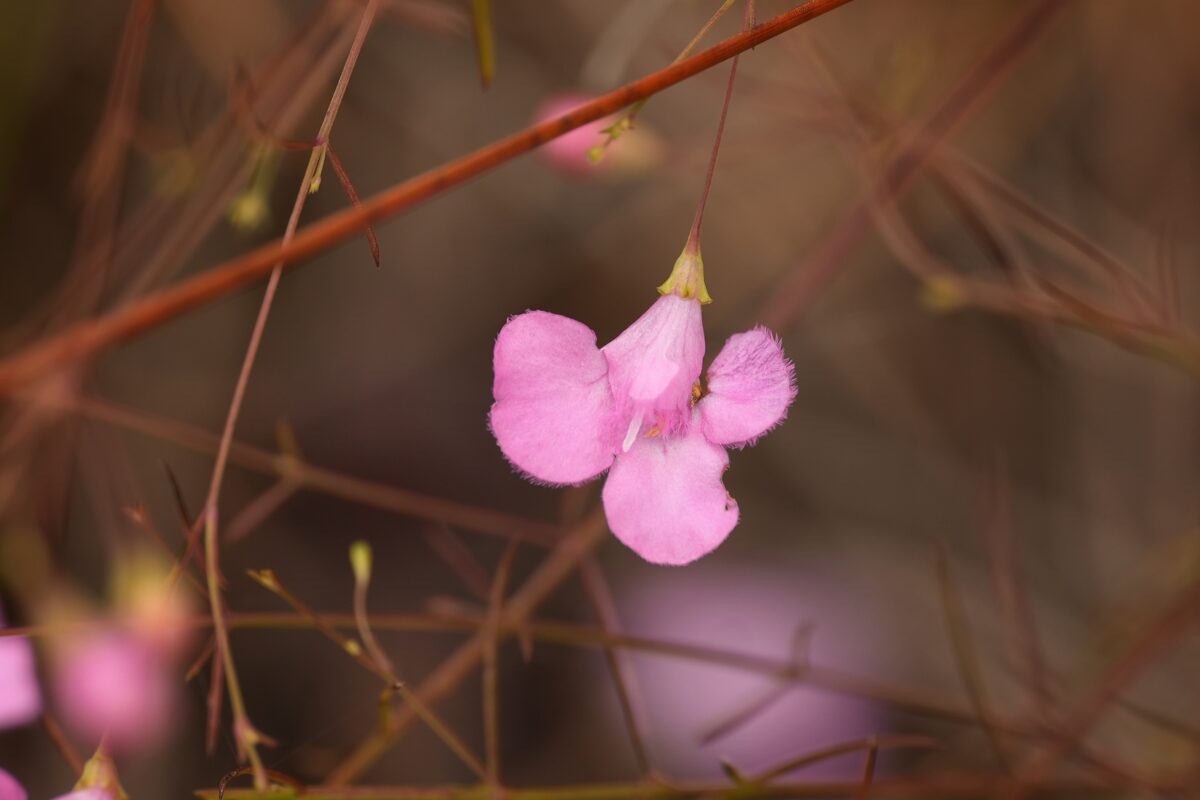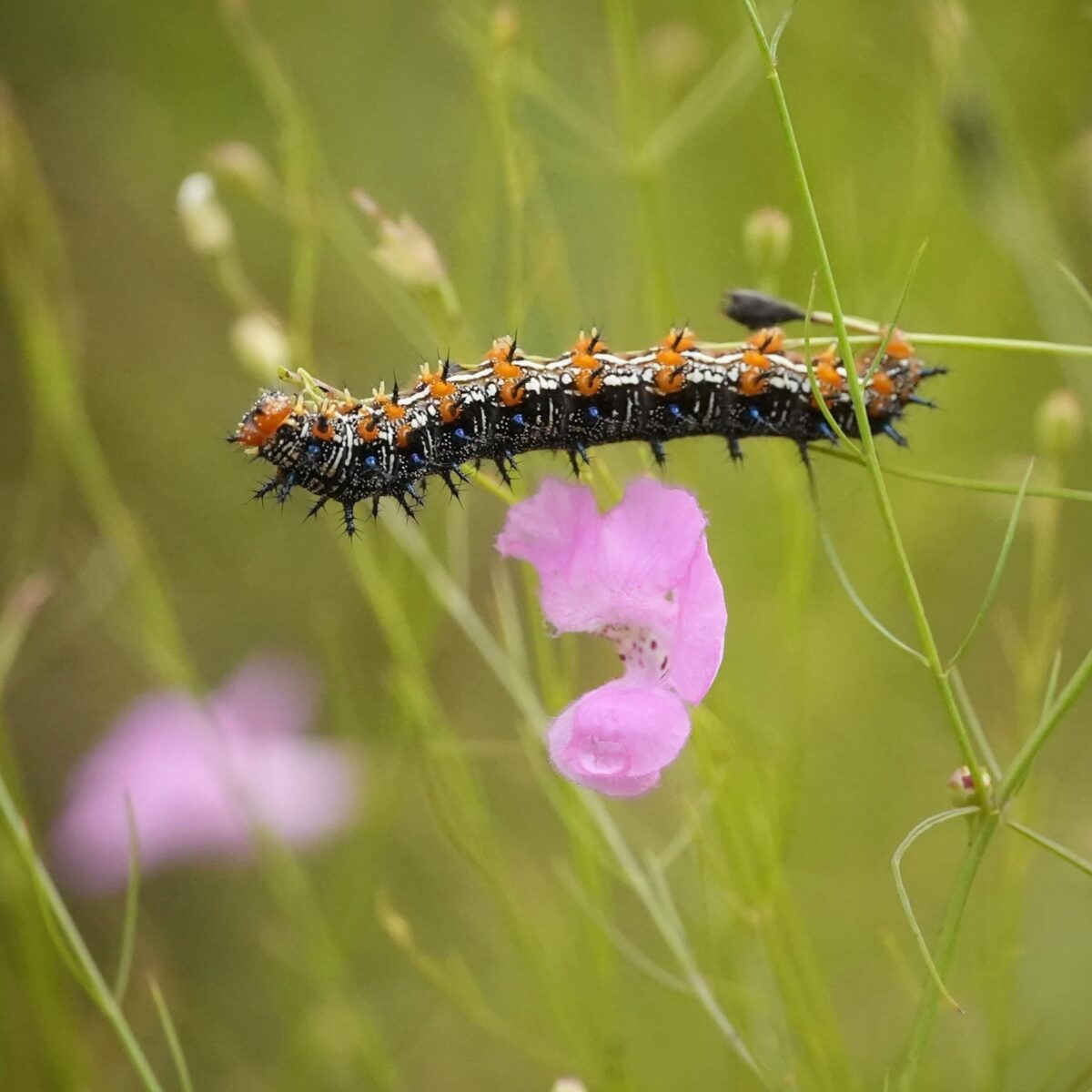Bloom Report: False Foxglove — A Parasite?!
by Jeff Norcini
Pictured above: Plukenet’s false foxglove (Agalinis plukenetii). Photo by Emily Bell
Well, it’s partially true! False foxglove (Agalinis spp.) is hemi-parasitic, meaning it’s partially a parasite. These showy, fall-blooming wildflowers tap into other plants for some nutrients, such as sugars and proteins, using specialized roots called haustoria. But they also have green tissue that produces their own sugars through photosynthesis.
Florida is home to 17 species of False foxglove, so no matter where you live, there’s a good chance you’ll spot at least one. All are native to Florida. Their pink to pinkish-purple flowers stand tall enough to easily spot. Flowers of several species are fuzzy — a detail you might miss unless you look closely. If you’re lucky, you might even see a Buckeye butterfly (Junonia coenia) on or flitting around these plants, as False foxgloves are important host plants for their caterpillars.
False foxgloves belong to the Orobanchaceae family, which includes other common Florida native wildflowers that are hemi-parasitic, such as American bluehearts (Buchnera americana), Black senna (Seymeria spp.), and Yellow false foxglove (Aureolaria spp.).
Here are some False foxgloves you may find throughout the state (click the links for photos and more info):
- Beach false foxglove (Agalinis fasciculata) (most common species in Florida)
- Flaxleaf false foxglove (Agalinis linifolia)
- Purple false foxglove (Agalinis purpurea)
- Seminole false foxglove (Agalinis filifolia)
Want to explore more of Florida’s vibrant fall bloomers? Check out these past bloom reports:
- Fall is Aster Time!
- Blazing Star Lives Up to Its Name
- Native Grasses Shine in the Fall
- Fall is Golden in Florida
As you explore and enjoy Florida’s fall beauty, remember this: Wildflowers are best left where they grow. Many of our native wildflowers reproduce only by seed, so picking flowers reduces their ability to sustain future generations. Instead of picking wildflowers, take a picture — it will last longer! If you’d like to bring wildflowers into your own space, consider planting some in your yard or in containers on your patio or porch.
Native wildflower seed packets are available from the Florida Wildflower Growers Cooperative. Click here to check availability and place an order. You can also find native wildflower plants (and sometimes seeds) at nurseries or garden centers that specialize in native species. Visit the Florida Association of Native Nurseries’ website to find a native garden center near you.



